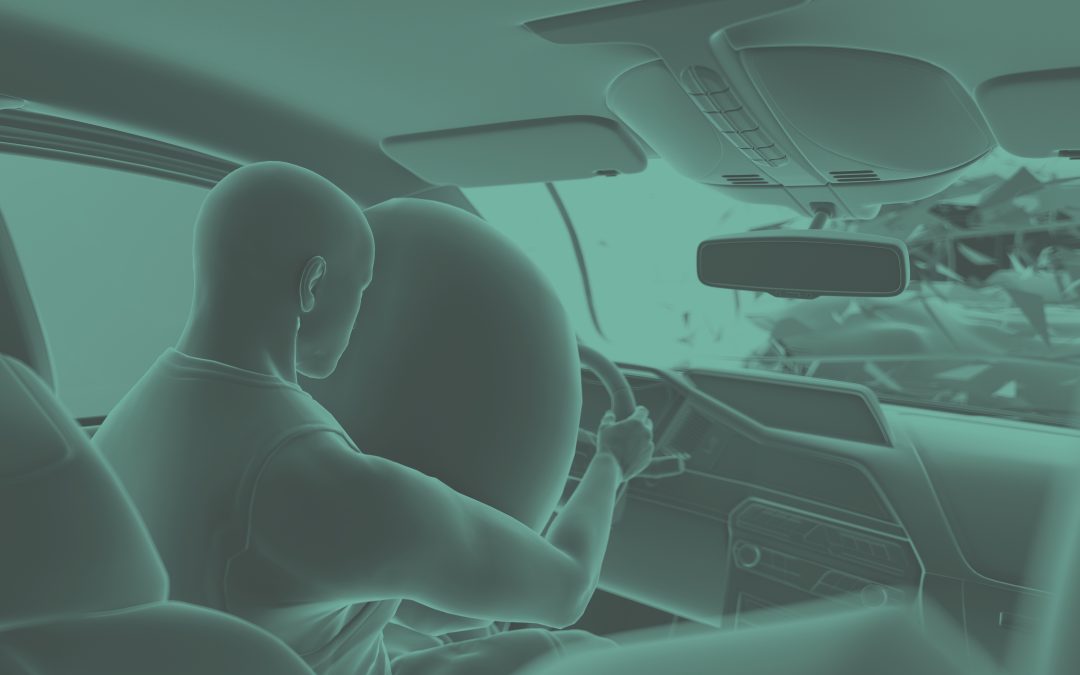Active Safety vs Passive Safety
In the realm of vehicle safety, it is important to distinguish between active and passive safety. Active safety is concerned with everything that could potentially lead to accidents and focuses on minimizing these factors. On the other hand, passive safety systems aim to minimize the impact of unavoidable accidents such as lowering the rate of fatalities and serious injuries. In contrast to active safety systems, passive safety systems are in effect during or after accidents.
Passive Safety Systems in Detail
Passive safety consists of three main subcategories:
Airbags: During a collision, airbags are deployed to protect the occupants of the vehicle. Through the fast inflation of airbags, a soft restraint between the occupants and the vehicle is created which reduces the severity of injuries and prevents fatalities. Historically, they were placed in the front of the driver and co-driver but nowadays there are also side airbags to protect occupants from side impacts.
Seatbelts: Similarly, seatbelts help occupants to stay in a safe position, away from the vehicle’s rigid parts, during an accident or sudden stop. They keep occupants from being ejected outside of the vehicle in the event of a severe crash. Moreover, the seatbelts in cars today are pre-tensioned, which indicates that they are tightened upon impact.
Crumble/Crush Zones: Crumble zones are specially engineered to release the kinetic energy of a crash in a controlled manner. Certain parts of the vehicles are designed to crumple during a crash to absorb the impact.
Additionally, a newer feature which could be counted as a new passive safety component in the European Union (EU) is the eCall which provides rapid assistance to passengers involved in accidents.
Passive Safety Regulations
Similar to other regulations in the automotive industry, passive safety regulations are in constant development. The commercial introduction of airbags in passenger vehicles was through the 1973 Oldsmobile Toronado, however, it was broadly adopted only in the early 1990s. It became mandatory for vehicles to be equipped with airbags in 1998 in the US and in 2009 in the EU.
As for seatbelts, the modern three-point seatbelt that we still use today, was invented in 1959 however, EU regulations only started mandating seatbelt use for all passengers in 2006.
The next step in passive safety regulations is the mandating of adaptive restraints. Compared to traditional systems, adaptive restraints react differently depending on the vehicle’s occupants and the situation in the vehicle before and during a crash. After EuroNCAP included adaptive restraint control systems in their Vision 2030, OEM’s and Tier 1’s search for the most effective solution gained pace. While it is crucially important to have effective passive safety systems in place, it is not as easily implemented.
To be able to prevent fatalities and injuries in the event of a crash, fast and accurate systems need to be created. This requires knowledge of the body positioning and characteristics of the occupants in the vehicle before and during the crash.
Solutions in the Industry
Multiple tools and systems are being developed to obtain the most accurate results. A novel approach is the smart-RCS project by emotion3D, Veoneer (now partly Magna) and AVL. Through a camera-based occupant monitoring system (OMS), the partners created the world’s first personalized restraint control system. In the event of a crash, the system captures the exact location and positioning of the passengers in the vehicle and calculates the appropriate airbag deployment strategy. This approach does not only help to better prevent injuries and fatalities but also overcomes inherent biases in the industry based on physical attributes, which is emphasized in EuroNCAP’s Vision 2030. The system features a Time of Flight (ToF) camera, to obtain a robust and accurate measurement of the occupants’ positioning within the vehicle, as well as the occupants’ height, weight and classification. The adaptive restraint control system takes this information into account when computing the optimized restraint deployment strategy.
Other direct sensing tools used in passive safety solutions are radar and ultrasound. These output the distance of occupants to the vehicle. While they provide accurate distance information, they lack further perception capabilities compared to camera-based systems and therefore shall only be used as a supplementary solution.
It is worth mentioning that there are also indirect sensing options that calculate the distance / occupant classification through the position of the seat rather than the occupants’ positions – solutions that have been heavily used in the past and present. Those sensing options, however, are inaccurate and can lead to misclassifications.
Future Outlook
As Euro NCAP will likely include adaptive restraints in their future protocols, it is expected that OEMs will start incorporating more and more safety solutions in their vehicles. The increase in interest and number of solutions being worked on is already noticeable.
As one of the pioneers in this area, emotion3D is continuing to work on its passive safety offerings with the aim to improve safety on all fronts.
If you’re taking part in CES 2024 in Las Vegas from the 9-12th of January, you can have the chance to experience Cabin Eye Safety first-hand, through our joint demo with Melexis!

